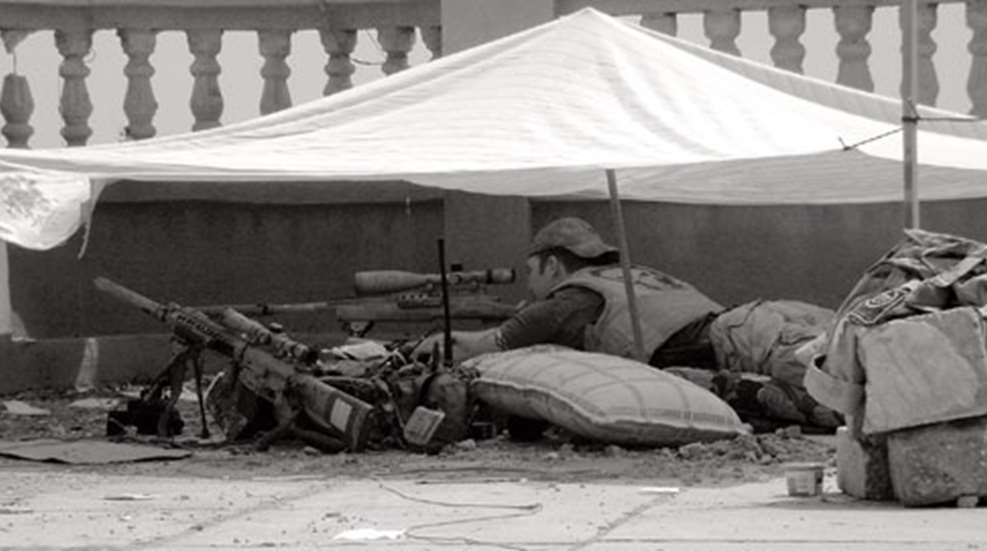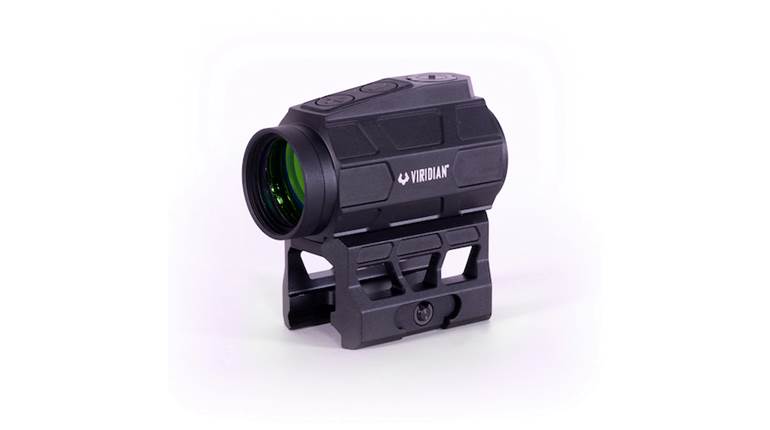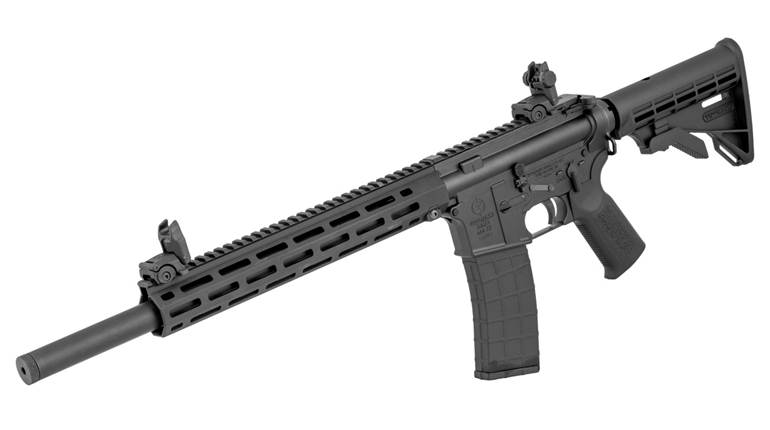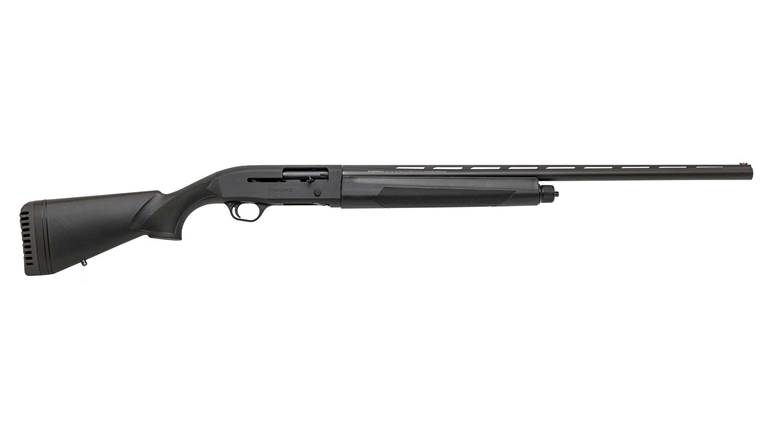
Photos courtesy of HarperCollins and Chris Kyle
Six years ago, while fighting raged in Iraq’s cities, I heard that American snipers were racking up phenomenal numbers of kills, possibly overtaking the Vietnam War records of U.S. Marine Corps Gunnery Sgt. Carlos Hathcock (93), Marine Sgt. Chuck Mawhinney (103) and Army Staff Sgt. Adelbert Waldron (109). The rumor was true.
America’s new record sniper recently stepped from the shadows with publication of his combat memoir, “American Sniper: The Autobiography of the Most Lethal Sniper in U.S. Military History.” During four tours in Iraq, former U.S. Navy SEAL Chief Petty Officer Chris Kyle logged 160 confirmed kills and almost twice that many “probables.”
I spoke with Chief Kyle, a veteran of the West Coast-based SEAL Team 3, and learned that, surprisingly, he doesn’t like to swim and has little enthusiasm for parachuting—but he loves to shoot. Since shouldering his first Daisy BB gun during his boyhood in Odessa, Texas, to the .300 Win. Mag. rifle he most often used in Iraq, shooting has been his favorite pastime. Still he would have to attend the three-month SEAL Sniper School in order to develop mastery of the skills necessary to ply his trade.
SEAL Team 3’s Sniper Concept
In Iraq, Kyle’s SEAL snipers did not function in traditional two-man teams. Operating as individual snipers, there was no spotter except when one sniper spotted through his riflescope while another fired. Given these relatively close urban engagement distances, this worked—but likely resulted in some kills not being recorded. According to Chief Kyle, a confirmed kill required a witness or a recovered enemy body.
Kyle usually worked with, or in support of, conventional U.S. Marine and Army forces, providing covering fire as they advanced into insurgent-held neighborhoods in areas such as Fallujah, Ramadi and Baghdad’s Sadr City. Typically his 16-man SEAL platoon seized “commanding terrain,” often the tallest building in a neighborhood, even if that meant infiltrating ahead of U.S. forces. Because most Iraqi buildings stood only one or two stories high, from a four-story building the platoon snipers were able to dominate an area. The SEAL platoon went in with plenty of firepower: machine guns, grenade launchers, shoulder-fired rockets and lots of ammunition. “What’s not understood,” Kyle explained, “is that in an urban area, after that first shot, you’re not going to sneak anywhere—you’d better be ready to fight. When you go into a city, there’s no moving. You’re defending. At times we were really stuck out there; it left us hanging but those guys needed our support. We were in danger, but so be it.” Twice Chief Kyle was hit by enemy bullets—luckily absorbed by his body armor—and shaken by several nearby IEDs.
From these elevated perches, he exploited the great reach of his favorite rifle, a custom-built Remington Model 700 bolt-action chambered in .300 Win. Mag. During his final tour his favorite rifle became a .338 Lapua Mag., which offered great reach and impressive barrier penetration.
Like a golfer picking the best club for a given situation, SEAL snipers could select among a variety of rifles that best fit their tactical setting. For long-range precision Kyle brought his bolt-action .300 Win. Mag.; for closer-range shooting, when quick follow-on shots were likely, he had a 7.62x51 mm NATO Mk 11, the Navy’s version of the semi-automatic Stoner SR-25; and for assaults, he had a short-barreled 5.56x45 mm NATO rifle similar to the Colt M4 Carbine. Only during his final tour did he have a .338 Lapua Mag. bolt-action. His standard .300 Win. Mag. load was a 190-grain match round manufactured by Black Hills Ammunition, which also loaded the 77-grain, 5.56 mm ammunition he fired. He fed his semi-automatic 7.62 mm rifle with 175-grain, M118 Long Range ammunition loaded by Federal.
Most of Kyle’s firing was from building interiors, or urban hides, usually well back into a room, firing prone from whatever support he could find. “We generally didn’t use hearing protection,” he explained, “because it was more important to listen for the [enemy] threat.” Often this was not a problem because he had suppressors for his .300 Win. Mag., 7.62 mm and 5.56 mm rifles; however, he had no suppressor for the powerful .338 Lapua Mag., whose punishing muzzle blast—accentuated by its muzzle brake—damaged his hearing.
The SEALs often exploited darkness, Chief Kyle reported, both for infiltrations and for sniping engagements. His night sniping benefitted greatly from an AN/PVS-27, a Generation III night-vision device that attached to his daylight Nightforce scope’s objective lens. The PVS-27 converted his daylight scope into a high-quality night scope without changing his “dope” or elevation adjustments. “I loved that piece of equipment,” Kyle told me. “With that we could make headshots up to 400, sometimes 500 yards.”
His favorite engagement distance? “The closer the better,” he said, because sniping is not a marksmanship challenge, it’s a deadly job of shooting as many enemy personnel as possible. This meant aiming center-mass with no fancy shots to impress his comrades. The Texas native preferred a light, 2-pound trigger pull, and usually adjusted his scope’s elevation knob, but not his windage; the constantly changing wind often didn’t allow enough time between shots to re-set it. He preferred to hold-off right or left, using a mil dot as a wind compensation aiming point.
Chief Kyle did plenty of shooting—whether defending his platoon’s urban fortresses, or supporting advancing U.S. troops. Distant insurgents often did not realize that from his height, he could see them sneaking along walls or peeking around corners. And as the units they supported advanced, Kyle’s SEAL platoon would advance, leapfrogging from one tall building to another.
Peekers And Pop Shots
Chief Kyle distinguished between two shooting situations he often encountered, which he called “Peekers” and “Pop Shots.” In Ramadi, he faced a steady stream of the latter when, out of nowhere, an enemy would pop up to take a shot at U.S. troops or toss a hand grenade. These were quick engagements, almost snap shots, but not especially difficult at 400 yards or less. His greatest challenge was staying alert, scanning a wide area and being ready for that quick shot.
The other frequent targets were “Peekers”—insurgents that exposed only their heads for a quick glance, pulled back, then sooner or later left their cover. “They would peek out, glance around, and then disappear,” he recalled. “We couldn’t shoot just because they were peeking—but we knew where they were. We just watched and waited.”
On one occasion in Sadr City, a “Peeker” eventually stepped out with an RPG rocket launcher; Kyle dropped him, bolted his rifle and waited for another insurgent to recover the RPG launcher. A full hour went by. Finally, a figure dashed out to retrieve the RPG, and Kyle put his crosshair on him but didn’t shoot. “It was a kid,” he realized, a young boy. He let the boy escape but cursed the adults who’d sent him.
“Bad, Worse And Worst”
“Fallujah was bad,” Kyle recounted, “Ramadi was worse, and Sadr City was the worst.”
Fallujah was where three American contractors were murdered in 2004, their bodies desecrated and then hung from a bridge. When this outrage brought only a minimal response, thousands of insurgents swarmed into Fallujah, all but daring the Americans to come and get them. In November 2004, U.S. Marine and Army forces swept through the heavily fortified city, block-by-block, killing or blasting out the insurgents. While supporting the battle, Kyle reported, he averaged two or three enemy kills per day, for a total of 40. Several times he shot insurgents at close range with 5.56 mm rounds and they did not halt, causing him to question the cartridge’s effectiveness. That ineffectiveness may have been caused by drugs. “In Fallujah we learned the bad guys were on dope,” he said. “The Americans gathering [enemy] bodies for burial found track [needle] marks on the arms of enemy dead.” U.S. forces also found burnt spoons from cooking heroin, syringes and black tar heroin, he said.
In Ramadi, Kyle’s SEAL platoon seized a four-story building where shooting was so heavy one day that it was difficult to keep track of the kills. The area’s U.S. Army commander estimated that SEAL snipers took out two dozen insurgents in their first 12 hours. It was here that he scored his 100th and 101st confirmed kills and was dubbed by the insurgents Al-Shaitan Ramad—“The Devil of Ramadi”—a moniker he accepted proudly because it attested to his effectiveness. With that nickname came a $50,000 bounty; he was actually a bit jealous when another SEAL sniper had an even higher bounty placed on his head.
Baghdad’s Sadr City neighborhood, by far, was the most difficult and dangerous place Chief Kyle operated. Its 3 million Shiite inhabitants lived along narrow, winding streets and alleyways, which were too dangerous to infiltrate on foot—even at night. “They were all around you, everywhere,” he soon realized, and the only safe way to enter was aboard armored vehicles. In Sadr City, Kyle and his fellow SEALs were tasked with covering U.S. Army engineers while they constructed a 12-feet-high concrete wall, which would protect the capitol’s Green Zone from rocket attacks. The month-long construction project proved a haven for insurgents.
Terming the area “a target-rich environment,” Kyle accounted for seven enemies in a single day; even more the next day. His closest engagement eliminated three armed insurgents who materialized just 15 yards from his concealed position, all falling to 5.56 mm fire.
Unlike their previous fights, in Sadr City Chief Kyle’s SEALs fought not just Iraqis, but Iranian Revolutionary Guard covert operatives from the elite “Quds Force.” Well trained and devoted true believers, some Quds Force troops previously had been identified in northern Iraq, where they supplied Iranian-made Explosively Formed Penetrators—the most dangerous of IEDs—and trained enemy snipers.
Chief Kyle’s longest kill in Sadr City was 880 yards but this was hardly his longest shot. His most extreme-range engagement came during his final tour, while covering an American convoy route just outside Baghdad. Watching an approaching U.S. Army convoy, he noticed an insurgent appear on a rooftop, wielding an RPG rocket launcher. The distance was 2,100 yards—about 1.2 miles.
So great a distance required at least 107 minutes-of-angle (m.o.a.) elevation, some 7 m.o.a. beyond his Nightforce scope’s maximum. Cranking the scope to its highest elevation, he held over the distant rocketeer, squeezed—and watched. Four and one-quarter seconds later the insurgent collapsed while the convoy passed safely below.
During his four tours, Chief Kyle was decorated with two Silver Stars for Gallantry and five Bronze Stars for Valor, but he emphasized he was not there to get medals. “Everyone I shot was evil. I had good cause on every shot.” And his only regret? The American servicemen his precision fire did not save. The way Chief Kyle sees it; he’s only continuing the heritage of great American snipers. “Right now I have the record,” he told me, “but Carlos Hathcock is still the greatest.”




































